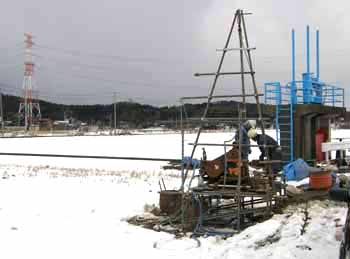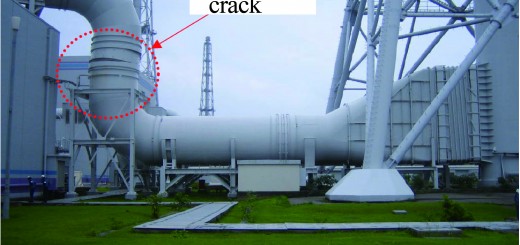The Future of Kashiwazaki-Kariwa Unit 7 Nuke Info Tokyo No. 128
On December 11, the Nuclear Safety Commission (NSC) announced its conclusion that, with a few provisos, the Kashiwazaki-Kariwa-7 Nuclear Power Plant (KK-7) is safe. NSC’s conclusion was based on consideration of the results of the Nuclear and Industrial Safety Agency’s (NISA) inspection and assessment of the plant. However, moves towards restarting the plant have not proceeded as NSC planned. The reasons are as follows:
1) The debate in two subcommittees established by Niigata Prefecture remains polarized on fundamental issues;
2) NSC and pro-nuclear academics were unable to answer questions posed by citizens during a debate sponsored by the above two subcommittees (Kariwa, December 23) and a hearing for local residents sponsored by NSC (Kashiwazaki, December 25);
3) In the course of work aimed at restarting the plants, there have been several fires and injuries, with the result that mistrust towards Tokyo Electric Power Company (TEPCO) has if anything increased.
 |
|
Citizens challenge official results by carrying out their own boring around the KK-NPP site.
|
The Niigata Prefecture subcommittee which is looking into the earthquake and the ground condition held its first meeting in March 2008. As of mid-January 2009 it had met seventeen times. Strange as it may seem, and contrary to a statement by the International Atomic Energy Agency (IAEA) in a press release dated December 5, scientific opinion remains divided about the cause of the July 2007 Chuetsu-Oki Earthquake.
Pro-nuclear academics say it was caused by the so-called F-B Fault (refer NIT 125). They base their assessment of potential future earthquakes and the design-basis earthquake ground motion (“Ss”) on this fault. Back-checks (refer NIT 124) were carried out for all Japanese nuclear power plants to assess seismic safety in the light of new seismic guidelines adopted in September 2006. In the case of Kashiwazaki-Kariwa, Ss was assessed on the basis that the F-B Fault was 36-kilometers long.
On the other hand, more critical scientists believe that the F-B Fault branches off from a shallow part of the Eastern Boundary Fault of the Sado Basin (see NIT 124), which they say is 50-70 kilometers long. They claim that this fault is more important for understanding the Chuetsu-Oki Earthquake and the type of earthquakes that could arise in future. If that is so, the magnitude predicted for future earthquakes would be larger than the officially accepted estimate. Clearly, the design-basis earthquake ground motion should also be set higher, contradicting the conclusion handed down by NISA and NSC.
The pro-nuclear academics justify their position on the grounds that an ultra-sound survey conducted in August 2008 by NISA off the coast of Kashiwazaki failed to detect the Eastern Boundary Fault of the Sado Basin. However, despite the fact that the survey was carried out directly above the fault plain that gave rise to the Chuetsu-Oki Earthquake, it was unable to locate that fault plain. Hence, it is not possible to conclude that faults do not exist on the basis of off shore ultra-sound surveys. The critical scientists make this point and state that it is necessary to carry out a proper geomorphological assessment of the region.
The other sub-committee is looking into equipment integrity and earthquake resistance and safety. It held its twelfth meeting on January 13 this year. However, the committee members still do not agree about whether or not KK-7 is safe.
TEPCO’s assessment of the plant’s integrity is based on visual inspections of equipment and computer calculations. Cross-checks by the Japan Nuclear Energy Safety Organization (JNES) found locations where the stress incurred was near the permitted limit. JNES confirmed the integrity of these locations after repeating the checks. In regard to locations which cannot be accessed due to high levels of radiation and locations where the confined space makes it impossible to insert testing equipment, judgments were made on the basis of calculations, or checks on similar parts elsewhere in the plant.
However, as a result of the far greater than predicted ground motion, it is possible that plastic deformation (refer NIT 125) could have occurred, even though there is no visible deformation. Unless pieces are cut out and metallurgical tests are carried out, there is no way of checking this with certainty. The only method that the pro-nuclear side has come up with is “hardness testing”, but this method is not accurate enough to detect strain in the key 0.2% ~ 2.0% range. Consequently, a grey zone remains where any judgment is mere guess work.
The sub-committee members do not necessarily agree about this grey zone. At the January 13 meeting TEPCO claimed that there is no grey zone. It says that the computer calculations are sufficiently conservative and that it knows from vast accumulated experience whether equipment is damaged or not. Some sub-committee members maintain that while there is a grey zone, it is not relevant from the point of view of safety. This issue relates to the question of whether to consider KK-7 separately from the other units (see NIT 127). It will be very interesting to see how this debate develops.
An issue relevant to the work of both sub-committees is how to interpret the fact that the reactor and turbine buildings have continued to move since the earthquake. TEPCO has measured the elevation of the buildings on three occasions since the earthquake – immediately after the earthquake, in February 2008 and again in August 2008. There are suspicions that the continued movement could be because the bedrock has broken up, or for some other similar cause. Alternatively, it could be related to the Madogasaka Fault, which NSC claims is not active.
During the December 23 meeting in Kariwa Village hosted by the Niigata Prefecture sub-committees, the chair of the subcommittee into equipment integrity and earthquake resistance and safety, Haruo Yamazaki, responded to a question with an example of a nuclear power plant floating on a cup of starch. When construction of the Kashiwazaki-Kariwa Nuclear Power Plant was first planned, people said it was like building a nuclear power plant on tofu. Now we find that the ground on which the plant is built is no more solid than a cup of starch.
On January 7, the mayor of Kashiwazaki stated in his New Year press conference that local approval is required on two occasions, before and after start-up tests of KK-7. His statement suggests that the bureaucratic processes are in motion. The Japanese fiscal year ends on March 31. We expect there will be lots of maneuvering until then.
Yukio Yamaguchi (CNIC Co-Director)

